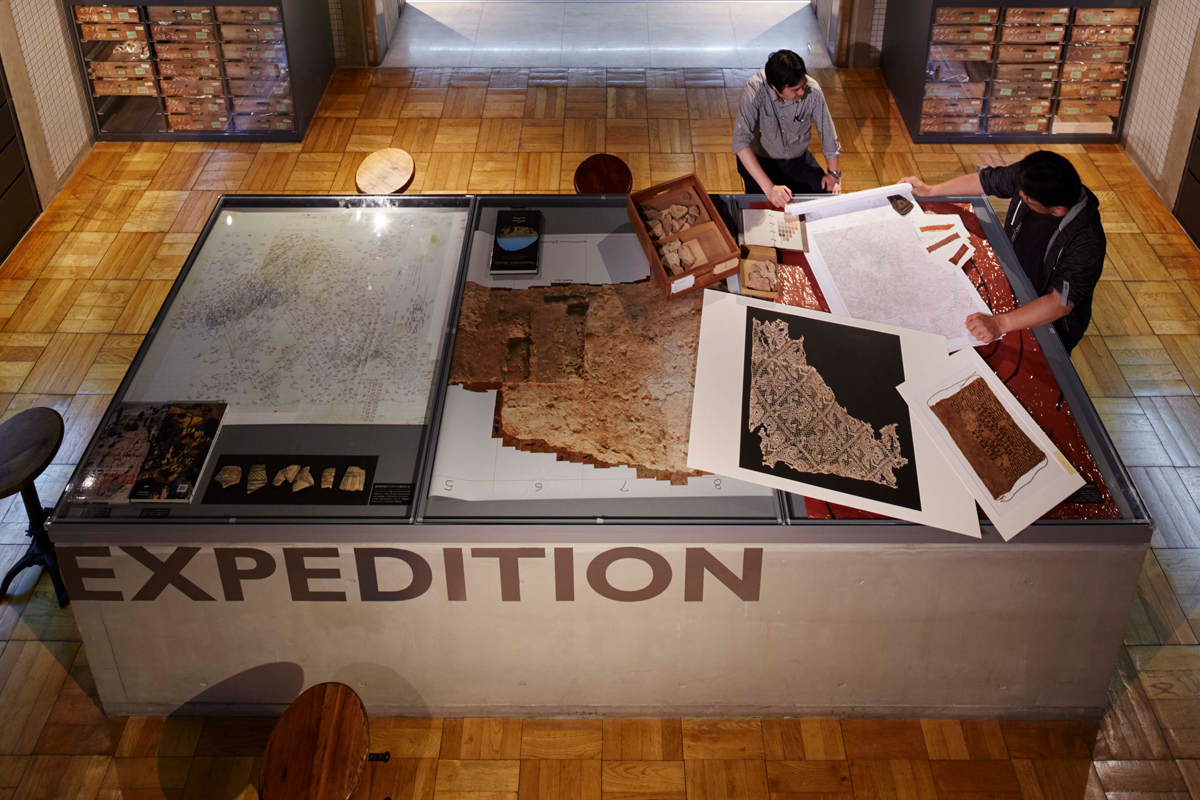
Scientific expeditions and the University Museum
Overseas scientific expeditions investigate issues that cannot be solved with evidence from the Japanese archipelagos alone. The UMUT has served as a major base for the organization of such research projects at the University of Tokyo. Among numerous expeditions covering diverse research disciplines, the exhibition features three long-term expeditions that started after World War II. The first is the Iraq-Iran Archaeological Expedition (1956–), which targeted investigating the origins of ancient civilizations in Mesopotamia, with a special focus on the development of early farming societies as a foundation for civilizations. The second is the Scientific Expedition to Nuclear America (1958–), which also aimed to document the origins of ancient civilizations, but from a different field – the Andes Mountains of Peru. The third expedition on display is the Scientific Expedition to West Asia (1961–). Its research objective has been the investigation of human evolution using fossil evidence, in which a series of Neanderthal remains have been discovered in the Levant.
The important contributions of these expeditions, which are still in progress, are not limited to each research field. They significantly enlarged the research scope of Japanese academia post-World War II, which was previously rather limited to East Asia. They also contributed to building a substantial research collection at the University Museum. As such expeditions consisted of numerous scientists from various disciplines, the unique collections available in Japan for original research benefited from multi-disciplinary perspectives.
Yoshihiro Nishiaki
References
西秋良宏(1997)「エクスペディシオンと研究の越境」『精神のエクスペディシオン』:384-391、東京大学出版会。
